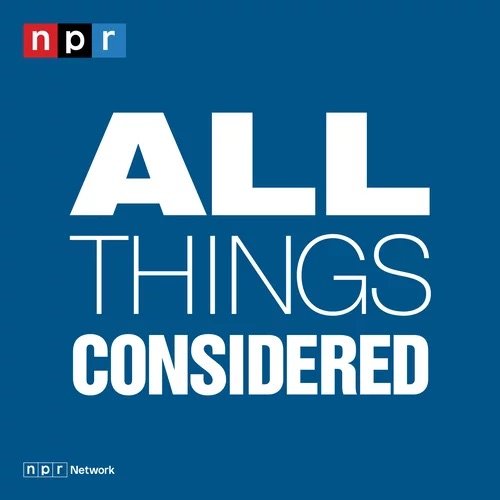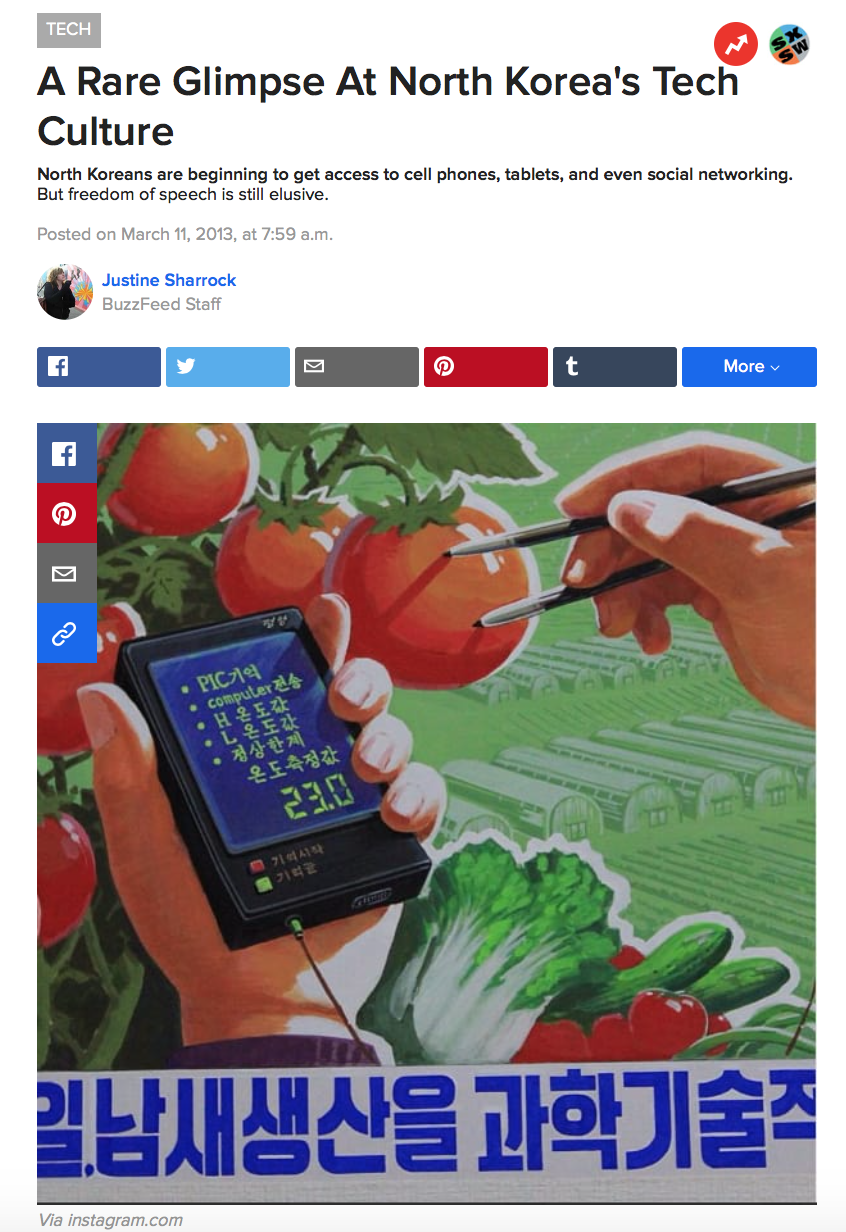La estrategia de Pyongyang es una puesta en escena para llevar a la mesa de negociaciones a EEUU y Seúl; según la corresponsal jefa de AP en la zona, Jean H. Lee
El Observador: El régimen de la retórica mística →
Der Westen: Twitter bietet seltene Einblicke in den nordkoreanischen Alltag →
Die Drohgebärden Nordkoreas verstellen den Blick auf den Alltag der Bevölkerung. Wer sich auch darüber informieren will, kann das derzeit besonders gut bei Twitter. Dort veröffentlicht die Journalistin Jean H. Lee regelmäßig Fotos und kleine Filmaufnahmen, die sie bei ihren Nordkorea-Besuchen macht.
New Focus Intl: Exclusive: Glimpses Behind-the-Scenes of Dennis Rodman’s Trip to North Korea →
Le Monde: La Corée du Nord en direct sur Skype →
Washington Post: A rare glimpse of North Korea’s version of Facebook →
Austin Chronicle: Social Media in North Korea The AP bureau chief from Pyongyang on cell service, Instagram, etc. →
BY ASHLEY MORENO, 10:00AM, MON. MAR. 11, 2013
On Saturday, Eric Carvin, Social Media Editor for the AP, interviewed Lee about technology and social media adoption in North Korea. Lee explained that access to technology – hardware like computers and cell phones, as well as networks, like cell service and the Internet – depends heavily on whether you are a foreigner or a local. And if you are a local, whether you are a wealthy citizen living in Pyongyang, or you are a less affluent citizen living in a rural area.
“Foreigners do have access to broadband Internet. Very fast. No firewalls, which is a relief after being in China,” said Lee. Earlier this year, Lee broke the story that North Korea had a new 3G, wireless data network for cell phones. Lee also sent the first tweet over that network via her handle @newsjean and posted the first Instagram photos. “The North Koreans, however, have very limited access to the international Internet,” said Lee. “They have their own intranet, which is fairly readily accessible if you have access to a computer on a network at a university or a library or something like that. That gives them access to the state media, information sources that are vetted by the government, and picked and pulled from the Internet and posted to their intranet site.”
While North Koreans cannot access the “international Internet,” even through the new 3G service, this does not mean that they do not know it exists. This is especially true in places like Pyongyang. And access to hardware is increasing. “Koreans are Koreans, whether you are in North Korea or South Korea,” said Lee. “They really love gadgets, and we’re starting to see a lot more electronic devices. There is a lot of fascination, and any tourist who visits probably knows that locals are fascinated by whatever gadgets they have with them.”
More than a million North Koreans do have cell phones. “They’re very expensive,” said Lee. “But for those who can afford it, it means they can communicate fairly easily with their friends and families. They use the phones in many ways like we do. They take pictures with their cell phones. They send text messages. They read the newspaper. They read books. And they talk a lot, including in movies.” So much so that Lee says theaters now have PSAs asking filmgoers to avoid talking on cell phones during the movie … and not to remove their shoes, which Lee joked is “apparently a North Korean thing.”
North Koreans do have social networks within their international Internet, most of which look similar to the one in this photo from Lee’s Instagram feed. It’s a birthday bulletin board where you can leave posts for friends and family. She didn’t say specifically whether or not other boards are full of cats, but it’s probably safe to assume there is at least one.
Keep up with all our SXSW coverage at austinchronicle.com/sxsw. Sign up for our South-by-specific newsletter at austinchronicle.com/newsletters/ for news, reviews, and previews delivered to your inbox every day of the Fest. And for the latest Tweets, follow @ChronSXSW.
Buzzfeed: A Rare Glimpse At North Korea's Tech Culture →
Last week North Korea launched its first 3G data network. Access is severely limited — citizens can't access the network, while foreigners can — which allowed Associated Press reporter Jean H. Lee to be the first person ever to send a tweet from the country. It's a big step forward, considering that back in 2008, when Lee first entered North Korea, she and other foreigners had to leave their smartphones at the airport.
BuzzFeed met Lee at South by Southwest, where she shared insight into North Korea's small but growing tech culture.
Read More




























